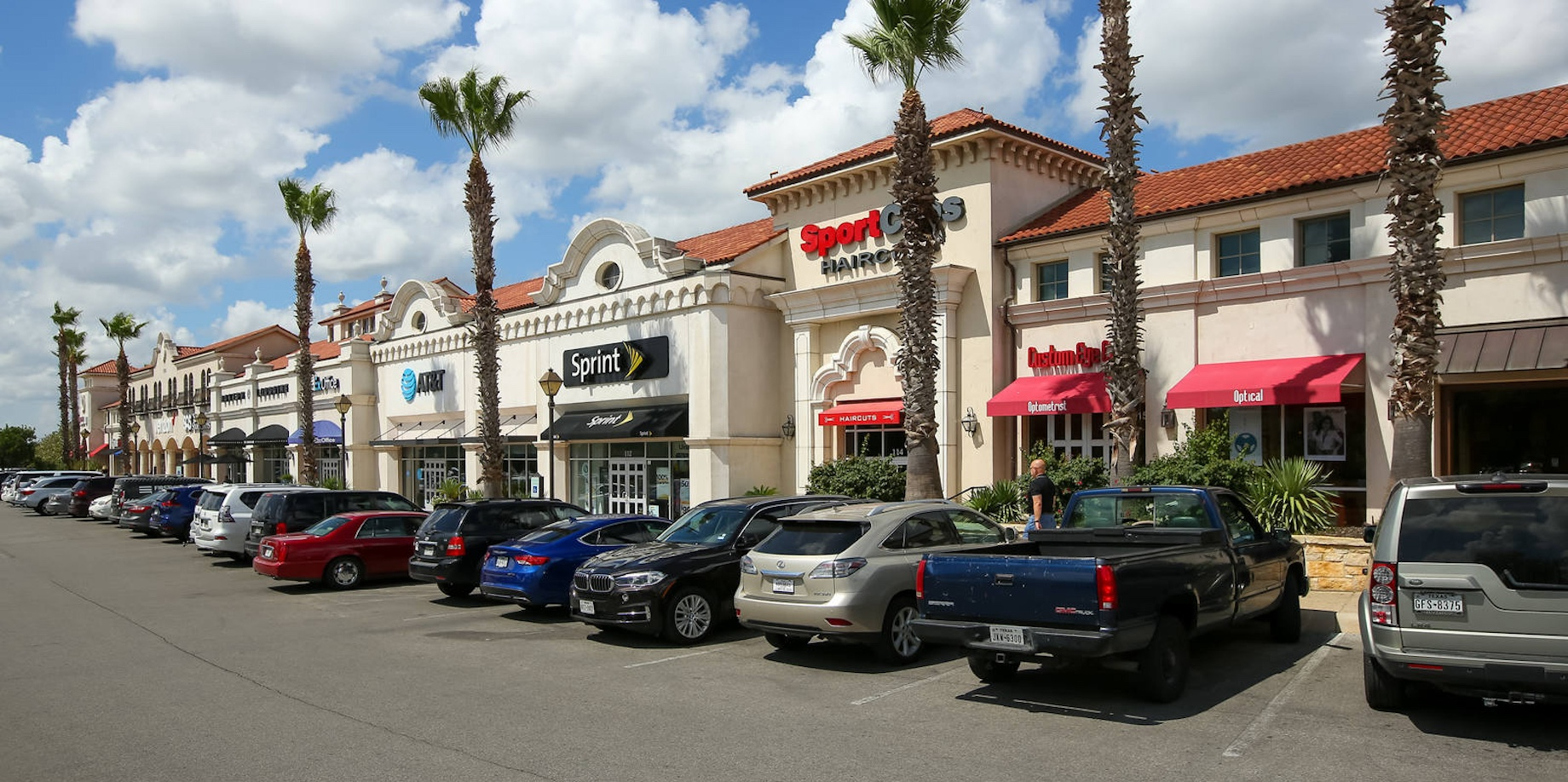Co-tenancy restrictions in which anchor tenants dictate a shopping center’s uses long have been a part of leases. Since the early 2000s when rampant development outstripped demand, retailers have enjoyed leverage over landlords. That’s no longer the case.
Note the relaxation of restrictions on gyms, boutique fitness operators, entertainment, medical uses and co-working space providers. Now, with years of muted construction and the accelerated purge of long-faltering retail assets, low shopping center vacancy has shifted power to landlords. “We’re at a fundamentally different point in retail today than we have been in several years,” said SiteWorks Retail Real Estate Services president Nick Egelanian. “Less than one-tenth of shopping center growth is happening today compared with 20 years ago, and where there is new construction, there’s a lot more pragmatism related to restrictions going on.”
In many cases, landlords are able to negotiate around the traditional blanket restrictions on uses like medical, securing waivers for tenants that fall into those broad categories, said Eve Sembler, vice president for developer Sembler Co., which has nearly 10 million square feet under leasing and management. “We’re digging into what tenants are trying to protect against and more clearly define the language to that specific concern,” she added. “The way retail has evolved, the threats of yesterday may not be the threats of today or the future.”
“The way retail has evolved, the threats of yesterday may not be the threats of today or the future.”
Much of the changing co-tenancy landscape comes down to anchors recognizing that shopping centers need a new and diverse set of traffic generators, said Greg Ix, a senior vice president of leasing for Big V Property Group, which owns and operates some 9 million square feet of retail. “There’s more discussion and understanding about what uses drive traffic to shopping centers,” he said. “Everybody realizes that they’re competing against the internet, so how we attract people and get them to spend more time at properties is a big deal.”
Stuck in the Past?
Just because tenants are more willing to work with landlords to modify restrictions doesn’t mean the retailers have abandoned such demands, though. They want to avoid direct competitors, of course, but their litany of unwelcome co-tenant uses remains largely the same as it has for years, leasing experts say. Typically, those include healthcare providers, massage parlors, gyms, full-service restaurants, secondhand stores and auto repair shops.
But that broad language has become antiquated, as many of those are the very categories have driven retail expansion of late, said Alan Lloyd, senior vice president of leasing for GBT Realty, which has about 5 million square feet of assets under management. The term “massage parlor,” for instance, shouldn’t apply to fresher takes on the use like high-scale operators Massage Envy or Hand & Stone Massage & Facial Spa, he argued. First-class concepts like used-clothing store Plato’s Closet, as well as quick-oil-change operators, no longer fit the outdated category terms, either, Lloyd continued. To accommodate such uses, GBT Realty tends to create carveouts. “Anchor tenants see what’s been happening in the retail industry,” he explained, “so they’re OK with the carveouts as long as the asset doesn’t turn into a medical mall or flea market.”

GBT Realty’s 166,000-square-foot, Target-anchored Shoppes of Brentwood Hills community center in suburban Nashville includes a Bodyrok Pilates studio, Elements Massage and medical uses.
While restrictions on massage parlors are meant to safeguard an asset’s character, fears that users of gyms, restaurants, medical services and other uses would fill parking lots and inconvenience an anchor’s customers have fueled the lion’s share of prohibitions, leasing professionals note.
But as the importance of traffic generation has increased, anchors have relented, instead just ensuring that parking-consuming users locate some distance away within the property. That’s changing, too, observed Gerald Divaris, CEO of Divaris Real Estate, which manages some 40 million square feet of commercial space. “Today, a grocer may want a gym nearby, he said. “The person who uses it in the morning is going to want to come in and buy juice or yogurt. The reality is that a good shopping center is one in which the landlord and tenant do well together. That’s really the best situation to be in because everyone respects each other’s strengths and needs.”
“Anchor tenants see what’s been happening in the retail industry, so they’re OK with the carveouts as long as the asset doesn’t turn into a medical mall or flea market.”
Finding Compromise
The definition of anchors has changed, too, which also is fostering flexibility, added Daniel Goldware, a senior vice president of leasing at mixed-use developer Trademark, which has 17 properties. Today, an anchor could be a collection of restaurants, a gym or an activated public space, he explained. He still runs into “old school” leases that forbid fitness, liquor stores and other uses in redevelopments, but he’s finding a willingness to compromise in most situations. “I’ve told my team that the lease may say no to whatever type of use it is, but that should never stop us from talking to our tenants,” Goldware shared. “Nine times out 10, they’ll work with us on a waiver. We’re not asking for waivers so that we can build some offensive use.”

Trademark is transforming a 40-year-old shopping center in Arlington, Texas, into a mixed-use project whose first phase will include 152,000 square feet of retail and restaurant space. The developer acquired the property in 2022 and is renaming it Anthem.
Leasing experts working on redevelopments express similar sentiments. From a landlord’s perspective, how to approach a request for waivers depends on goals for the asset, Sembler said. “It takes time to negotiate and adapt language to meet a tenant’s specific concern about a restricted use,” she said, “but we also need to keep in mind our concerns for how the shopping center is going to function today in terms of its current condition, its layout and co-tenancy and how it will evolve over time.”
Amid the give-and-take negotiations, some tenants consistently demand reduced rent, cash payments or term extensions at a lower rent, among other incentives, Divaris and Egelanian said. That can be the case even when the restricted use does not impact their operations. On the “high road” are tenants who make requests on the order of minor store improvements, Divaris added. “Landlords are beginning to get wise to those who take the high road and those who take the low road,” he declared, “and that could have a bearing on how they choose tenants going forward.”
Negotiating for waivers also can be clouded by how language is interpreted by the parties and their attorneys. When a children’s swimming school wanted to operate in one of Big V’s shopping centers, for example, the landlord took the view that it was an instructional use rather than a health-and-wellness use, the latter of which was prohibited by a grocery anchor, Ix said. The grocer had a different opinion. “Some of these users cross muddy lines,” he observed, “but every time a landlord needs to get consent, it seems like it costs something.”
“The lease may say no to whatever type of use it is, but that should never stop us from talking to our tenants. Nine times out 10, they’ll work with us on a waiver.”
Shifting Market
Evolution continues to drive the waiver chess game, whether new crazes like pickleball or changes in laws, such as the legalization of marijuana. Given turmoil in the office market, for example, co-working deals have ground to a halt, Goldware reported. Looking ahead, what prohibited uses today are likely to drive growth tomorrow?
Escape rooms, virtual reality venues and similar entertainment concepts catering to adults for corporate teambuilding, birthdays and other gatherings have become more acceptable, Ix said. Anchors still don’t want them near their front doors, however.

Big V Property Group’s 1.2 million-square-foot mixed-use center in San Antonio called The Rim includes a Laser Derm Med Spa, Aqua Tots Swim School and Sandbox VR.
Pickleball operators continue to expand and are seen as ideal tenants to backfill empty big boxes. Sembler Co. has yet to ink a pickleball deal, but it is intrigued by the sport’s ability to activate centers and bring in repeat customers, Sembler said. Other landlords are waiting to see whether pickleball is a fad, according to Ix. Noise and competition are potential issues, Divaris added. “The sound carries beyond the boundary of the store,” he remarked. “And more cities are building public facilities that are free, so will people pay to play pickleball in an establishment just because it serves food?”
While several states have legalized marijuana, many landlords in Class A centers have avoided purveyors of the product. Potential odors and whether the use fits a property’s character are two practical considerations, Divaris said. More important, not just some existing tenants but also some institutional lenders and equity investors have prohibitions against it.
Views could change if the U.S. Drug Enforcement Administration, which is reviewing marijuana’s status, reclassifies cannabis as less dangerous or if Congress passes proposed legislation to legalize and regulate it at the federal level. Given that it’s an election year, at least one of those decisions could happen sooner rather than later. “Eventually, I think it will be legalized everywhere, but I don’t see a lot of national landlords wanting to put cannabis in their properties today,” Ix pointed out. “Let’s see what happens in five years.”
By Joe Gose
Contributor, Commerce + Communities Today